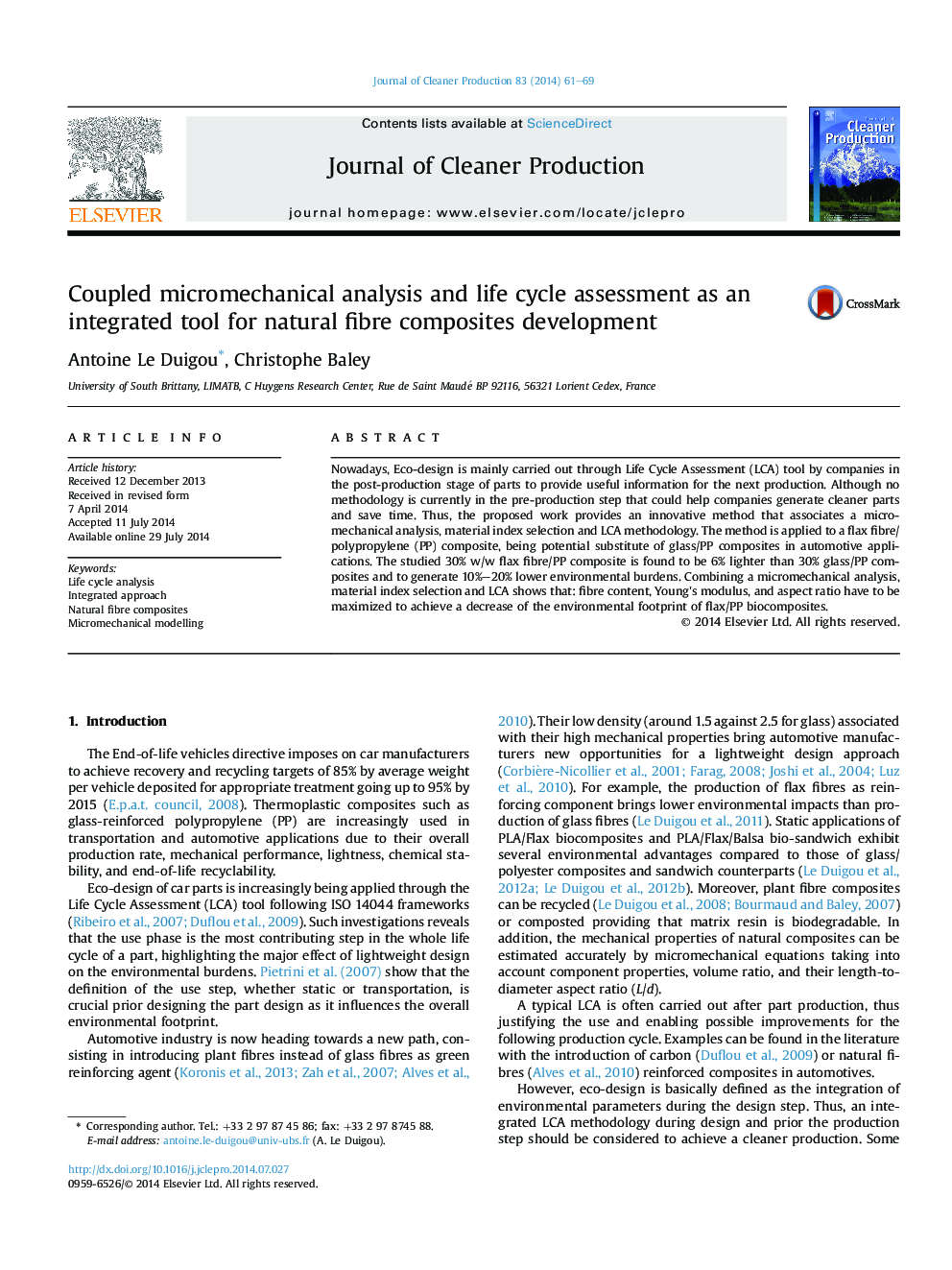| Article ID | Journal | Published Year | Pages | File Type |
|---|---|---|---|---|
| 8105306 | Journal of Cleaner Production | 2014 | 9 Pages |
Abstract
Nowadays, Eco-design is mainly carried out through Life Cycle Assessment (LCA) tool by companies in the post-production stage of parts to provide useful information for the next production. Although no methodology is currently in the pre-production step that could help companies generate cleaner parts and save time. Thus, the proposed work provides an innovative method that associates a micromechanical analysis, material index selection and LCA methodology. The method is applied to a flax fibre/polypropylene (PP) composite, being potential substitute of glass/PP composites in automotive applications. The studied 30% w/w flax fibre/PP composite is found to be 6% lighter than 30% glass/PP composites and to generate 10%-20% lower environmental burdens. Combining a micromechanical analysis, material index selection and LCA shows that: fibre content, Young's modulus, and aspect ratio have to be maximized to achieve a decrease of the environmental footprint of flax/PP biocomposites.
Related Topics
Physical Sciences and Engineering
Energy
Renewable Energy, Sustainability and the Environment
Authors
Antoine Le Duigou, Christophe Baley,
